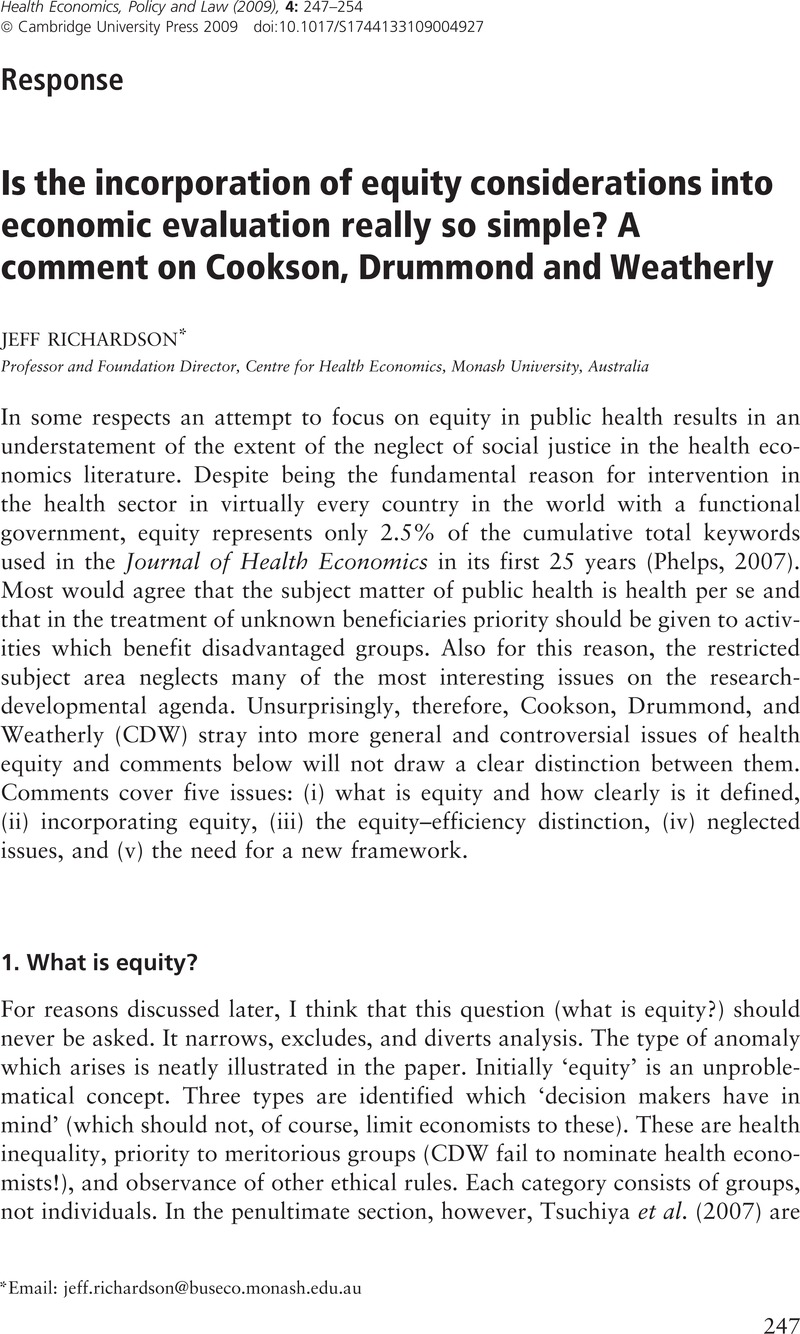Crossref Citations
This article has been cited by the following publications. This list is generated based on data provided by Crossref.
Pritchard, Colin
Lindsay, Kenneth
Cox, Malcolm
and
Foulkes, Lesley
2011.
Re-evaluating the National Subarachnoid Haemorrhage study (2006) from a Patient-Related-Outcome-Measure perspective: comparing fiscal outcomes of Treatment-as-Usual with an enhanced service.
British Journal of Neurosurgery,
Vol. 25,
Issue. 3,
p.
376.
Pritchard, Colin
Cox, Malcolm
Foulkes, Lesley
and
Lindsay, Kenneth
2011.
The patient's voice in neuro‐surgery: psycho‐socio‐economic benefits of a patient‐designed versus standard service following treatment for a subarachnoid haemorrhage.
Social Care and Neurodisability,
Vol. 2,
Issue. 2,
p.
80.
Pinto, Andrew D
Molnar, Agnes
Shankardass, Ketan
O’Campo, Patricia J
and
Bayoumi, Ahmed M
2015.
Economic considerations and health in all policies initiatives: evidence from interviews with key informants in Sweden, Quebec and South Australia.
BMC Public Health,
Vol. 15,
Issue. 1,
Squires, Hazel
Chilcott, James
Akehurst, Ronald
Burr, Jennifer
and
Kelly, Michael P.
2016.
A systematic literature review of the key challenges for developing the structure of public health economic models.
International Journal of Public Health,
Vol. 61,
Issue. 3,
p.
289.
Seixas, Brayan Viegas
2017.
Welfarism and extra-welfarism: a critical overview.
Cadernos de Saúde Pública,
Vol. 33,
Issue. 8,
Dukhanin, Vadim
Searle, Alexandra
Zwerling, Alice
Dowdy, David W.
Taylor, Holly A.
and
Merritt, Maria W.
2018.
Integrating social justice concerns into economic evaluation for healthcare and public health: A systematic review.
Social Science & Medicine,
Vol. 198,
Issue. ,
p.
27.



